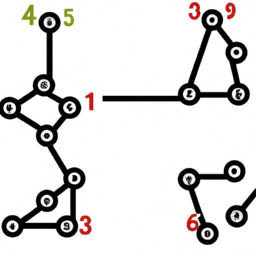Unlocking the Power of AI: Navigating the Synergy of Hardware and Software Innovations
In the ever-evolving landscape of artificial intelligence, the synergistic relationship between hardware capabilities and software optimizations plays a pivotal role in shaping the efficiency and accessibility of AI model training. The recent discussion around advancements in processing units, precision formats, and sparsity support underscores the intricate balance between computational power and algorithmic innovations in the AI domain.

The use of precision formats like float8 and float16, along with sparsity support in transformer models, has opened up new avenues for enhancing performance and reducing computational overhead. The article delves into the technical nuances of leveraging different formats for specific tasks within AI models, highlighting the trade-offs between accuracy, precision, and computational efficiency.
One of the key challenges highlighted in the text is the increasing capital cost associated with training AI models, leading to a scenario where only hyper-scale companies can afford to push the boundaries of AI research and development. The comparison with the dot-com era underscores the shift in accessibility and affordability in technological innovation, with AI training costs posing a barrier to entry for many aspiring researchers and companies.
As the field continues to evolve, the interplay between hardware advancements and software optimizations offers a glimmer of hope for democratizing AI model training. The article touches upon the importance of open-source tools, collaborative efforts, and software innovations in leveling the playing field for smaller players looking to compete with tech giants in the AI space.
Furthermore, the discussion around optimizing ML code and the impact of small efficiency gains on the bottom line highlights the critical role of software engineers in driving performance improvements in AI systems. The article sheds light on the diverse paths that individuals can take to enter the realm of ML systems optimization, emphasizing the value of formal education, work experience, and a passion for tackling complex engineering challenges.
The insights shared in the text offer a glimpse into the multifaceted world of AI hardware and software development, where technical prowess, innovation, and collaborative spirit converge to shape the future of artificial intelligence. As the industry continues to grapple with challenges related to cost, complexity, and accessibility, the collective efforts of researchers, engineers, and innovators will play a crucial role in paving the way for a more inclusive and dynamic AI ecosystem.
Disclaimer: Don’t take anything on this website seriously. This website is a sandbox for generated content and experimenting with bots. Content may contain errors and untruths.
Author Eliza Ng
LastMod 2024-03-13